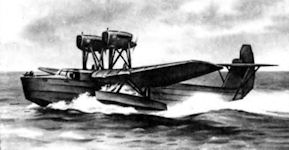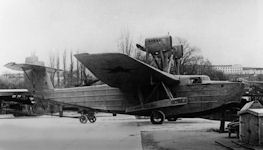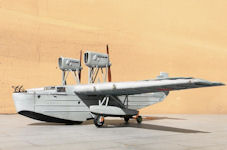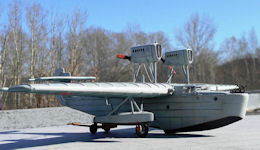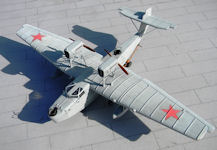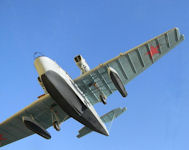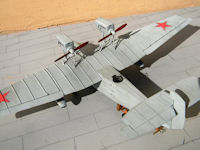ANT-8 (MDR-2) (MRI-1, MED)
Marine Long Range Scout (flying boat)
At the end of the 1920s, one of the activities of the design team of A.N.Tupolev was the design of seaplanes for naval aviation. In the early 1920s. in the USSR began to restore the Navy. However, the construction of large warships to the young state was not beyond the forces. Emphasis was placed on the development of submarines, torpedo boats and sea planes, which were relatively cheap and at the same time made it possible to effectively solve defensive tasks. TsAGI began work on all-metal MDR-2 [Morskoj Dalynij Razvedchik] at the AGSP (aviation, hydroaviation and pilot construction).
In 1925, work began at TsAGI on a machine that performs the functions of a long-range naval reconnaissance aircraft and a naval torpedo-reconnaissance aircraft. The seaplane, which received the designation ANT-8 (MDR-2), was an all-metal twin-engined flying high-gliding submarine with a cantilever wing and two carrying floats. Two BMW-VI engines with pushing propellers were placed on high racks above the center section of the wing on both sides of the boat.
I.Pogossky was assigned as the lead engineer of the car, he was responsible for the design of the boat, the design of the wing was entrusted to V.M. Petlyakov, N.S.Nekrasov plumage, E.Pogossky power plant. In December 1930, the plane was built and sent for testing to Sevastopol. January 30, 1931 pilot S.T.Rybalchuk made the first flight on the ANT-8. The first stage of testing ended March 20, 1931, the results of which resulted in a decision to increase the underwing floats and fuel reserves.
In the autumn of the same year, the second stage was held, in which the pilots MM Gromov, B.L. Bukhgolts, N.G.Kastanaev took part. ANT-8 was tested for take-off and landing from a wave, in flights with an overload mass, with one motor off. Good seaworthy qualities were noted, but they did not recommend ANT-8 to mass production and the use of naval aviation, due to the fact that its main characteristics were on par with the characteristics of seaplanes that were already in service with fleet aviation.
In 1929, the development of a civilian version of the ANT-8 began to be used on large rivers and on lines along the sea coast. From the military version of the ANT-8 differed internal layout, equipment and payload, increased to 1600 kilograms. But simultaneously with the minimized program of the naval reconnaissance torpedo bomber, the program for the civilian fleet was also completed.
After a year and a half, when the first mass-produced cars could come out, the MDR-2 would have been completely outdated. On this basis, the testing committee, headed by V.K. Lavrov, considered its adoption as superfluous. In the same 1932, a large flight was planned for ANT-8 along the Northern Sea Route. The car had to go along the route from Arkhangelsk to Uelen, and then through Petropavlovsk-Kamchatsky and Okhotsk to reach Nikolaevsk-on-Amur. On the road was scheduled aerial photography. However, to carry out the flight failed.
ANT-8 remained an experimental machine and became the foundation for the subsequent creation of large all-metal flying boats.
| ANT-8 (MDR-2) | |
| Crew | 3 people. |
| Maximum speed | 203 km / h |
| Flight range | 1,062 km |
| Practical ceiling | 3,350 m |
| Wing Span | 23.7 m |
| Weight empty | 4560 kg |
| Maximum take-off weight | 6920 kg |
| Engines | 2 x 680 hp |
| Machine gun armament | |
| Internal bomb load | 900 kg |
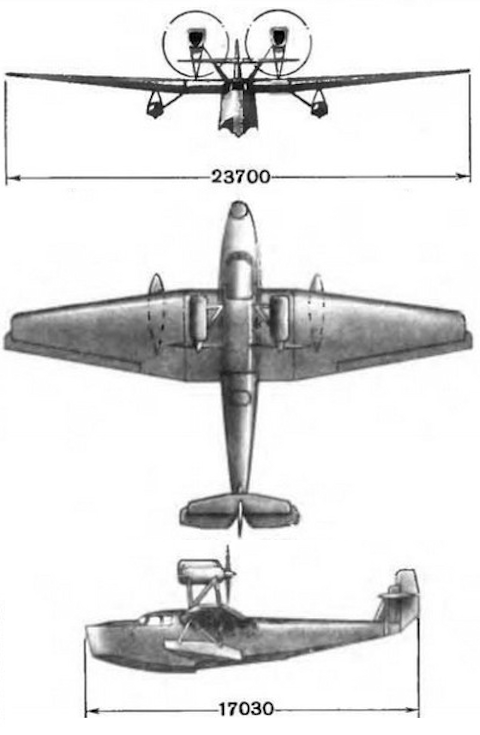
|
NEWSLETTER
|
| Join the GlobalSecurity.org mailing list |
|
|
|


